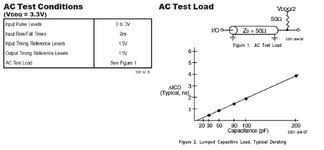Bjtpower
Full Member level 5
Hi,
I have SRAM 71V35761S166PFGI in my circuit and i wanted to check worst case current consumption for the same IC.
i have passed through datasheet and i am confused getting exact max current required for the SRMA IC.
SRAM is interfaced with Microcontroller
I have SRAM 71V35761S166PFGI in my circuit and i wanted to check worst case current consumption for the same IC.
i have passed through datasheet and i am confused getting exact max current required for the SRMA IC.
SRAM is interfaced with Microcontroller
